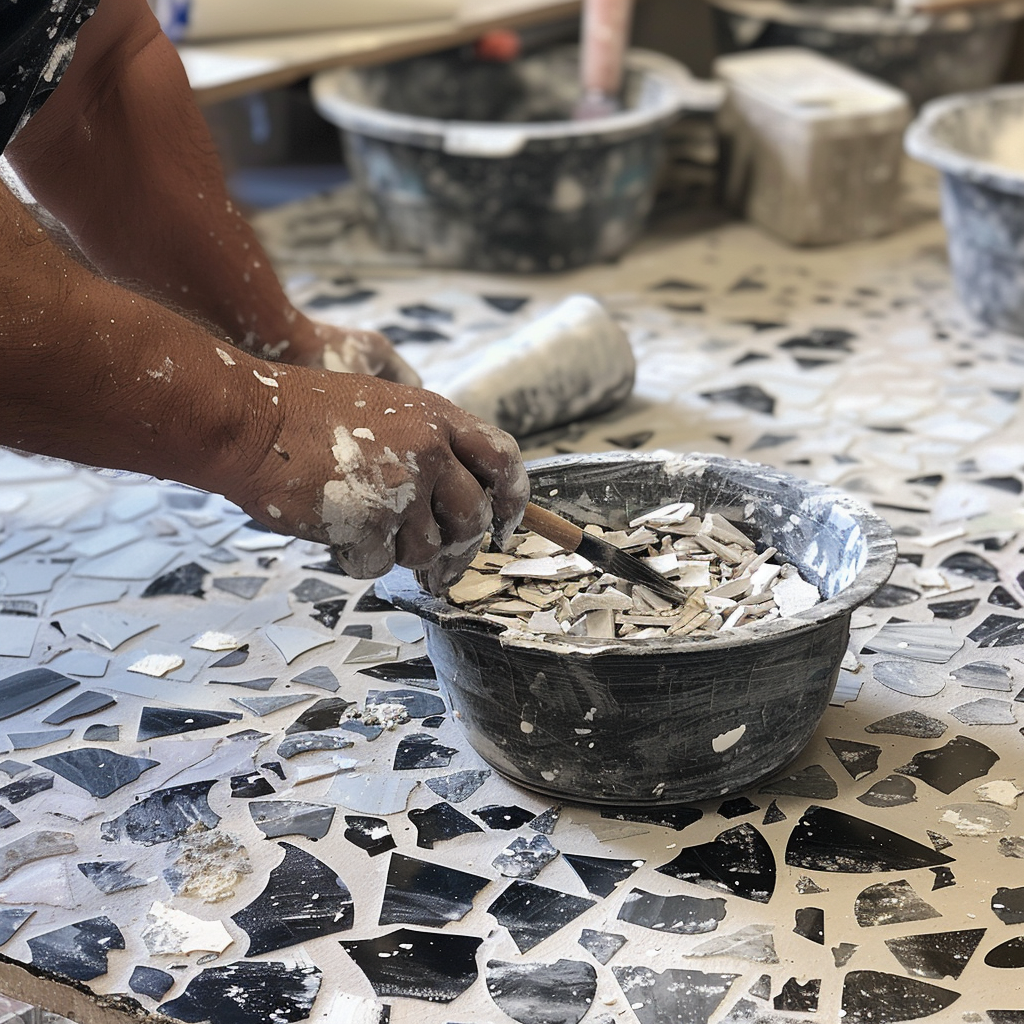Terrazzo: What Is It & Where is it Now?
Terrazzo, a composite material celebrated for its durability and splendor, stands as a testament to human ingenuity and the evolution of architectural materials. This material, characterized by its mosaic-like appearance, has transcended centuries, cultures, and styles, reinventing itself continually to fit the aesthetic and functional needs of its time. Let’s dive into the rich history, surprising facts, and the modern resurgence of terrazzo, uncovering aspects of this versatile material that many might not know.
The Venetian Origins and Beyond
While terrazzo is often associated with Italian craftsmanship, particularly that of Venice in the 15th century, its conceptual origins can be traced back to the ancient mosaics of Egypt, Mesopotamia, and later, the Roman Empire. These civilizations laid the groundwork for what would become terrazzo by crafting intricate floors from pieces of stone, clay, and glass. However, it was the Venetians who perfected terrazzo as we know it today, using marble chips set in clay and sealed with goat’s milk to create a polished surface. This innovative flooring was initially a low-cost option that utilized marble remnants, making it a prime example of early recycling practices.
Fun Fact:
Did you know that the use of goat’s milk in the original terrazzo floors served as a sealer, giving the surface its characteristic shine?
The Evolution of Terrazzo
Terrazzo’s journey through the ages is a showcase of adaptability and innovation. From its humble beginnings, the material found its way into the grand palaces of Renaissance Italy, signaling a transition from a utilitarian option to a symbol of luxury and sophistication. The 18th and 19th centuries saw terrazzo cross borders, embedding itself in the architectural fabric of Europe and the Americas.
The 20th century, particularly during the Art Deco and Mid-century Modern movements, marked a renaissance for terrazzo. It adorned the floors of iconic buildings, airports, and homes, celebrated for its versatility and aesthetic appeal. Notably, the introduction of electric grinding machines and advances in the creation of polymers expanded terrazzo’s color palette and application methods, paving the way for its use in vertical surfaces, furniture, and decorative objects.
Fun Fact:
The Hollywood Walk of Fame, one of the most visited landmarks, features terrazzo with stars embedded in the sidewalks, combining brass letters with a background of pink terrazzo.
Terrazzo Today: Beyond Flooring
Today, terrazzo is not just for floors. Its resurgence in contemporary design is marked by innovation and sustainability. Designers and architects now use terrazzo in a multitude of ways, from wall finishes and countertops to furniture and art installations. The material’s durability, ease of maintenance, and limitless customization options have cemented its status in modern design.
Sustainable and Eco-friendly
One of the most compelling aspects of terrazzo is its sustainability. Modern terrazzo mixes often include recycled materials like glass, granite, quartz, and even metal scraps, contributing to a circular economy. Additionally, its longevity and low maintenance requirements make terrazzo a green choice for both commercial and residential projects.
Fun Fact:
Terrazzo can contribute to a building’s LEED (Leadership in Energy and Environmental Design) certification, thanks to its use of recycled materials and the role it plays in sustainable architecture.
The Future of Terrazzo
As we look to the future, terrazzo’s potential seems boundless. The development of new materials and technologies promises even more innovative uses, from smart terrazzo floors that can harness energy to translucent terrazzo used in lighting and decorative features. The intersection of tradition and innovation continues to drive terrazzo’s popularity, ensuring its place in the future of design.
Fun Fact:
Researchers are experimenting with terrazzo-like materials that incorporate bio-based resins and photoluminescent aggregates, enabling floors and surfaces to glow in the dark, reducing the need for artificial lighting.
Conclusion
Terrazzo’s story is one of resilience, beauty, and constant evolution. From its ancient roots to its modern applications, this material has proven to be both timeless and timely, offering endless possibilities for creativity and sustainable design. As we continue to explore and push the boundaries of what terrazzo can be, it remains a vibrant and vital part of our architectural and cultural landscape, a true testament to the art of transformation.







